VVC streaming is a frequently used term in the streaming sector and I am pretty sure that you have come across this term multiple times.
Ever wondered what does VVC streaming exactly mean? Or, what’s this hype about?
Well, hold on, as I walk you through all the must-know details about VVC streaming if you are running a streaming business or are planning to start one.
VVC, or Versatile Video Coding is a revolutionary advancement that promises to reshape the way streaming platforms deliver content to their audiences. Understanding the intricacies of VVC is crucial for streaming businesses aiming to remain at the forefront of digital entertainment.
As the demand for superior video quality, efficient compression, and optimized streaming experiences continues to rise, a clear knowledge of VVC becomes a cornerstone for achieving success in the competitive world of streaming.
And here we go – guiding you through all you need to know about VVC streaming!
What Is VVC or H.266?
As the successor to its predecessor, H.265 (HEVC), VVC or H.266 emerges as a transformative force that promises to redefine the way we encode, transmit, and consume video content. With its potential to offer superior compression efficiency without compromising on video quality, VVC has captured the attention of industries ranging from streaming and broadcasting to video conferencing and beyond.
Delving into the realm of VVC unveils a world of innovative compression algorithms and optimized data transmission, ultimately reshaping the future of video content delivery. This exploration unravels its role in elevating video streaming experiences, and its impact on industries that rely on seamless and high-quality visual communication.
An In-Depth Overview of VVC Streaming
In the video streaming sector, the demand for high-quality videos that can be efficiently transmitted over various networks is ever-growing. This is where VVC, or Versatile Video Coding steps onto the stage as a transformative video compression standard.
VVC’s ability to compress video data while maintaining exceptional visual fidelity has garnered attention across industries, from streaming platforms to video conferencing systems. Now let’s delve deeper into its underlying principles and how it works.
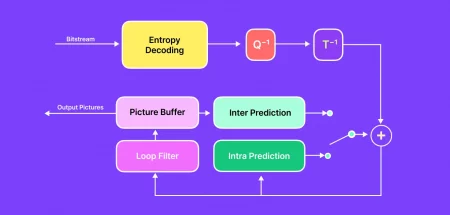
1. Frame Division
This foundational step involves breaking down video content into its elemental components, known as frames. Each frame is essentially an individual image that constitutes a single frame of the video sequence.
This meticulous division serves as the canvas upon which VVC’s compression magic unfolds, ultimately shaping the seamless playback and efficient transmission of video content.
- Frames as Visual Snapshots: Frames are akin to visual snapshots frozen in time. They capture a moment within the video sequence, much like individual frames of a film reel. When played in rapid succession, these frames create the illusion of motion that we perceive as video playback.
- Temporal Structure: Frames are organized temporally, following a specific order to create a continuous and coherent video sequence. Each frame is linked to its adjacent frames, crafting a dynamic narrative that unfolds on-screen.
- Importance of Frame Rate: The rate at which frames are displayed, known as the frame rate, plays a crucial role in determining the perceived smoothness and fluidity of motion. Common frame rates include 24, 30, and 60 frames per second (fps), with higher frame rates yielding smoother motion but requiring more data.
- Key Role in Compression: Frame division forms the foundational structure for compression algorithms to work their magic. By breaking down the video content into discrete frames, compression techniques can be applied to each frame individually or collectively, optimizing the balance between file size and visual quality.
- Interplay with Other Compression Techniques: Frame division interacts closely with other compression techniques, such as motion estimation and compensation. These techniques leverage the relationship between frames to identify areas of motion and redundancy, contributing to efficient compression.
- Adaptive Techniques: In advanced video compression standards like VVC, adaptive frame division strategies may be employed. These strategies adapt frame sizes based on content complexity and motion, allowing for optimized encoding and efficient data utilization.
- Scalability and Flexibility: The division of video content into frames also lays the groundwork for scalability. Different versions of a video can be created by altering frame sizes or quality levels, enabling adaptive streaming to match network conditions and device capabilities.
- Visual Continuity and Coherence: Accurate frame division ensures visual continuity and coherence within the video sequence. Seamless transitions between frames maintain the fluidity of motion, contributing to a high-quality viewing experience.
2. Temporal and Spatial Prediction
Temporal and spatial prediction – these twin pillars leverage the interplay of past and present, exploiting both temporal coherence and spatial relationships to forecast pixel values and patterns. Through these predictive techniques, VVC navigates the vast landscape of video content, compressing it with finesse while retaining its visual qualities.
a. Temporal Prediction: Drawing on Historical Context
Temporal prediction hinges on the concept of leveraging the temporal context of video frames. This strategy acknowledges that consecutive frames within a video sequence often exhibit significant similarities due to the continuity of motion and scene composition. VVC harnesses these patterns by predicting the values of subsequent frames based on their predecessors.
- Motion Estimation and Compensation: Central to temporal prediction is the concept of motion estimation and compensation. Motion estimation identifies regions of movement between frames, capturing the displacements of objects and elements. These motion vectors are then used for motion compensation, allowing VVC to predict the positions of objects in subsequent frames. By predicting these movements, VVC reduces the amount of information that needs to be encoded, optimizing compression.
- Inter-Frames and P-Frame Prediction: Temporal prediction comes to life in inter-frame prediction, where reference frames (I-frames or intra-frames) are used to predict the values of non-reference frames (P-frames or predicted frames). The predictive power of inter-frames lies in the fact that they need to store only the differences (residuals) between the predicted and actual values, resulting in efficient compression.
b. Spatial Prediction: Weaving a Tapestry of Context
Spatial prediction operates on the premise that pixel values within a frame are influenced by their neighboring pixels. By identifying spatial redundancies and patterns, VVC predicts pixel values within a frame, allowing for efficient encoding.
- Intra-Frames and I-Frame Prediction: Intra-frame coding takes center stage in spatial prediction. Within an individual frame, predictive coding techniques are applied to predict pixel values based on the surrounding pixels. The differences between the predicted and actual values are then encoded, contributing to compression efficiency.
- Adaptive Block Sizes: VVC introduces adaptive block size coding, where blocks of various sizes are employed for prediction. This adaptive approach enables VVC to choose the most suitable block size for different regions of the frame, enhancing compression efficiency across diverse content. The synergy of temporal and spatial prediction is a testament to VVC’s holistic approach to efficiency. By blending insights from historical contexts and spatial relationships, VVC makes intelligent predictions that guide subsequent compression processes, resulting in optimal data utilization and visually appealing outcomes.
3. Transformation and Quantization
At the core of VVC’s video compression journey lies the transformative interplay of two crucial steps: transform and quantization. These processes are the artisans of efficiency, sculpting the spatial pixel information of video frames into the frequency domain and then molding it into a form that optimizes data utilization while preserving perceptual quality.
a. Transforming Spatial to Frequency Domain: Dissecting DCT
VVC employs the Discrete Cosine Transform (DCT), a mathematical transformation that serves as a gateway to the frequency domain. This transformation deconstructs the spatial pixel information of a video frame into a series of frequency components, uncovering hidden patterns and textures that shape the visual essence of the frame.
- Frequency Components: The DCT unravels a spectrum of frequency components, ranging from low to high frequencies. Low-frequency components represent large-scale patterns and gradual transitions, while high-frequency components capture finer details, edges, and abrupt changes in the image.
- Cosine Coefficients: DCT produces cosine coefficients that quantify the magnitude of each frequency component. These coefficients encode the strength of the different frequencies present in the frame.
b. Quantization: Crafting Precision through Approximation
Quantization follows the transformation phase, offering a unique form of artistry that balances visual quality and data efficiency. In this step, the frequency coefficients generated by DCT are approximated to a smaller set of values.
- Variable Levels of Precision: Quantization introduces a parameter known as a quantization step size or quantization parameter (QP). This parameter governs the level of precision used for quantization. A higher QP results in coarser quantization, which can lead to more compression but may also impact visual quality.
- Trade-Off: Quality versus Compression: Quantization entails a delicate trade-off between preserving visual quality and achieving compression efficiency. Coarser quantization reduces the number of bits needed to represent each coefficient, resulting in higher compression but potential loss of visual detail. Fine quantization retains more detail but requires more bits.
- Elimination of Less Perceptually Important Data: Quantization is the key to VVC’s efficiency, as it eliminates less perceptually important data. High-frequency components, which often represent fine details that may not be as perceptible to the human eye, are quantized more aggressively, resulting in more efficient data representation.
- Preserving Essential Visual Information: Despite the loss of some detail, quantization is designed to retain essential visual information that contributes to the overall perceptual quality of the frame. This balance ensures that the visual integrity of the frame remains intact while achieving compression.
4. Intra-Frame Coding
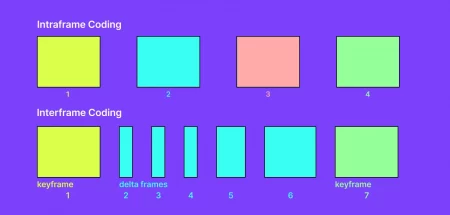
This process encapsulates the essence of each frame as an independent entity, meticulously dividing it into blocks and employing predictive coding to quell redundancy. Within these blocks, the symphony of pixel value predictions and residual encoding converges, paving the way for optimized compression while upholding visual fidelity.
- Dividing Frames into Blocks: Intra-frame coding orchestrates its symphony at the level of individual frames, transforming each frame into a mosaic of blocks. These blocks are discrete sections of the frame, and their independent nature lays the groundwork for predictive coding.
- Predictive Coding: At the heart of intra-frame coding lies predictive coding, where pixel values within each block are predicted based on neighboring blocks. This prediction is guided by the understanding that adjacent pixels often share similar characteristics, which can be exploited to encode pixel values efficiently.
- Spatial Prediction Modes: VVC introduces various spatial prediction modes, each embodying a different perspective on how pixels within a block relate to their surroundings. These modes capture different spatial relationships, such as horizontal, vertical, diagonal, and directional patterns.
- Predicted Pixel Values and Residuals: The predicted pixel values serve as a forecast for the pixel values within a block. The actual pixel values within the block are then compared to these predictions, revealing discrepancies known as residuals or differences. These residuals represent the fine nuances and deviations that predictive coding might have missed.
- Residual Encoding: The residuals, embodying the unique fingerprints of each frame’s complexity, are encoded through various techniques. These techniques capture the magnitude and direction of deviations, using fewer bits to represent larger deviations and more bits for subtler variations.
5. Entropy Coding
VVC employs entropy coding techniques, such as Arithmetic Coding or Context-Adaptive Binary Arithmetic Coding (CABAC), to compress the encoded residuals. Entropy coding capitalizes on the statistical properties of the residuals, assigning shorter codes to more probable values and longer codes to less probable values.
- Trade-Offs: Complexity and Compression: Intra-frame coding operates in the realm of frame self-sufficiency, offering efficient compression for individual frames. However, since it operates within the confines of a single frame, it might not capture motion information between frames. This limitation is balanced by inter-frame coding techniques.
- Visual Fidelity and Efficiency: Intra-frame coding’s prediction and residual encoding dance forms a harmonious blend that optimizes compression without sacrificing visual fidelity. By focusing on the self-sufficient content of individual frames, VVC masterfully reduces redundancy and crafts efficient data representations.
6. Inter-Frame Coding
This process, akin to a choreographed symphony of movement, identifies areas of motion between frames, generates motion vectors to symbolize that motion, and subsequently predicts the positions of objects in forthcoming frames.
This paves the way for refined visual quality, efficient compression, and a seamless viewing experience.
- Identifying Motion: At the heart of inter-frame coding lies motion estimation, a process that seeks to unearth the dynamic shifts and transformations occurring between successive frames. Through this process, VVC identifies regions where objects or elements have moved, introducing motion into the sequence.
- Motion Vectors: Motion estimation generates motion vectors, which act as translators of motion into data. These vectors encode the direction and magnitude of the shifts that objects have undergone between frames. A motion vector points from the location of an object in the reference frame to its anticipated position in the current frame.
- Predictive Precision: Motion vectors play a pivotal role in predictive coding. They allow VVC to predict where objects or elements will appear in the current frame based on their positions in the reference frame. By accounting for motion, predictive coding becomes a mechanism for intelligent compression, as it’s now predicting dynamic changes.
- Bidirectional Motion Compensation: VVC introduces bidirectional motion compensation, a technique that considers motion vectors from both the past and the future frames. This approach further enhances the accuracy of motion compensation, as it takes into account motion information from multiple perspectives.
- Temporal and Spatial Precision: Accurate motion estimation and compensation are not without challenges. Rapid and complex motion, occlusions, and changes in lighting can pose difficulties. VVC addresses these challenges through advanced techniques, adaptive block sizes, and innovative prediction modes.
7. Variable Block Size Coding
This technique reshapes the traditional notion of fixed block sizes by introducing adaptability that mirrors the diverse intricacies of content. VVC’s intelligent selection of block sizes, based on the nuances of content characteristics, redefines compression efficiency. This adaptive approach optimizes the compression process, ensuring that content of varying complexities is represented with utmost efficiency and quality.
- Traditional Fixed Block Sizes vs. Adaptive Mastery: Historically, video compression relied on fixed block sizes for coding. These blocks were rigid, lacking the flexibility to adapt to the diverse textures and intricacies present within different parts of a frame. This rigidity often led to inefficiencies, particularly in handling varying content complexities.
- Dynamic Adaptability: VVC revolutionizes this landscape by embracing dynamic adaptability. Variable block size coding allows VVC to intelligently select the optimal block size for coding, catering to the specific attributes of each portion of the frame. This adaptability unleashes efficiency by allocating bits more intelligently and reducing redundant information.
- Intelligent Block Partitioning: VVC’s adaptive approach involves intelligent block partitioning. Rather than segmenting the frame into uniform blocks, VVC divides it into variable-sized blocks that cater to the content’s inherent texture and detail. Smaller blocks capture finer details, while larger blocks encapsulate broader patterns.
- Hierarchical Structure: VVC employs a hierarchical structure of blocks, with smaller blocks nested within larger ones. This layered approach allows VVC to allocate more bits to regions requiring greater precision, ensuring that essential details are preserved while optimizing efficiency.
- Texture Complexity and Compression Efficiency: The dynamic selection of block sizes aligns with the texture complexity of content. Intricate textures warrant smaller block sizes, ensuring that fine details are captured accurately. Conversely, smoother textures can be represented with larger blocks, reducing the overhead of redundant information.
8. Prediction Units and Tree Structures
This hierarchical approach reshapes the coding landscape by organizing prediction units into nested tiers, allowing for granular allocation of bits. VVC’s ability to allocate bits with precision to different components within an image enhances compression efficiency while safeguarding essential visual information.
- Hierarchical Organization: VVC orchestrates its prediction units into a hierarchical structure, akin to a symphony where each note contributes to the harmonious whole. Larger prediction units encompass smaller ones, forming tiers of granularity that reflect the varying complexities of content.
- Tree Structures: The hierarchical arrangement often takes the form of tree structures. Just as the branches of a tree extend from a central trunk, prediction units branch out from higher-level units to encompass more localized content within an image.
- Coding Precision: The hierarchical approach enhances coding precision by tailoring it to content intricacies. Larger prediction units, representing broader areas of an image, are allocated more bits to ensure accurate representation. Smaller prediction units, corresponding to finer details, receive fewer bits while maintaining visual fidelity.
- Adaptive Allocation: The hierarchical structure enables VVC to adaptively allocate bits based on the importance of different components within an image. Essential regions, such as faces or prominent objects, can receive more bits to preserve their visual integrity. Less critical areas can be allocated fewer bits, optimizing efficiency without compromising overall quality.
- Flexibility in Partitioning: VVC offers flexibility in partitioning, allowing prediction units to be tailored to the characteristics of the content. Complex scenes with intricate details can benefit from smaller prediction units, ensuring precision in capturing fine nuances. Simpler scenes may utilize larger prediction units to maintain efficiency.
- Fine-Tuning Coding Efficiency: Hierarchical prediction units and tree structures contribute to fine-tuning coding efficiency. The allocation of bits mirrors the importance of content within each unit, ensuring that the compression process remains adaptive and responsive to content variations.
9. In-Loop Filtering and Deblocking
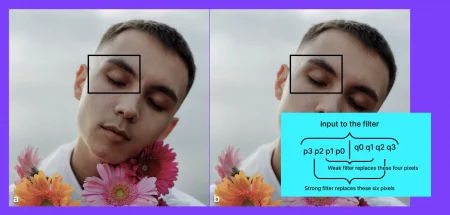
During video compression, ensuring good visual quality is paramount. To achieve this, VVC introduces a duo of refined techniques: in-loop filtering and deblocking. These processes address the challenges of compression artifacts, smooth out block boundaries, and mend visual imperfections. As the final brushstrokes on the canvas of compression, in-loop filtering and deblocking techniques elevate the perceptual quality of compressed videos, enriching the viewing experience with a touch of finesse.
Compression, while essential for efficient data transmission, can introduce artifacts – unintended visual distortions that arise at block boundaries. These artifacts can disrupt visual harmony, detracting from the intended quality of video content. In-loop filtering and deblocking emerge as solutions that delicately mend these imperfections.
a. In-Loop Filtering
In-loop filtering, also known as post-processing, refines the compressed content after encoding. It operates at the intersection of art and science, smoothing out block edges and enhancing visual coherence. By addressing pixel-level discontinuities, in-loop filtering mitigates the harsh transitions that can manifest as blocking or ringing artifacts.
b. Deblocking
Deblocking techniques are a subset of in-loop filtering, tailored to specifically address block artifacts. These techniques delicately soften the abrupt transitions between blocks, allowing the eye to glide smoothly across the image. By applying subtle adjustments to pixel values along block boundaries, deblocking creates an illusion of continuity.
- Adaptive Filtering: VVC introduces adaptive filtering techniques that adapt to content characteristics. The degree of filtering can be customized. Complex scenes with fine details might warrant gentler filtering, preserving nuances, while uniform scenes can benefit from more aggressive filtering.
- Quantitative and Perceptual Metrics: The effectiveness of in-loop filtering and deblocking is gauged through both quantitative and perceptual metrics. Quantitative metrics involve measuring pixel-level differences between the original and filtered frames. Perceptual metrics, on the other hand, assess how humans perceive the quality improvement, ensuring that the techniques align with the intended viewing experience.
- Balancing Quality and Efficiency: In-loop filtering and deblocking techniques play a vital role in achieving a delicate balance between quality improvement and efficiency. While these techniques enhance visual quality, they also introduce computational complexity. VVC carefully navigates this balance, ensuring that the techniques enhance the viewing experience without overwhelming decoding resources.

The Top Benefits of VVC Streaming
1. High Compression Efficiency
VVC’s arrival heralds an era of unparalleled compression efficiency, setting the stage for streaming platforms to optimize data usage while delivering content of exceptional quality. The foundation of VVC’s efficiency lies in its adaptive approach to compression, which maximizes data reduction while retaining perceptual excellence.
VVC introduces a refined suite of ai tools for coding, each meticulously designed to ensure that no byte goes to waste. These tools embrace the intricacies of content by dynamically adjusting encoding techniques to match the characteristics of the video. The incorporation of advanced algorithms, machine learning, and perceptual modeling empowers VVC to allocate bits judiciously, prioritize essential information, and eliminate redundancies.
2. Enhanced Visual Quality
One of the most striking benefits of VVC is its commitment to enhancing visual quality, even as it endeavors to compress data. The integration of innovative techniques, such as improved intra-prediction modes and flexible transform options, crafts a compression symphony that preserves the intricate details, textures, and nuances of content.
VVC’s approach to predictive coding elevates its ability to predict pixel values accurately. The result is a reduction in compression artifacts, blockiness, and visual distortions. VVC’s predictive prowess is further enhanced by its motion estimation techniques, which ensure that motion across frames is captured with precision. As a result, the visual experience for viewers is not only efficient but also visually captivating, mirroring the intended quality of the content.
3. Bandwidth Savings
In a digital landscape where bandwidth is a valuable currency, VVC emerges as a savior, offering substantial bandwidth savings without compromising content quality. The strategic allocation of bits, intelligent selection of coding modes, and adaptability to content complexities combine to create an encoding process that uses bandwidth with utmost efficiency.
VVC’s prowess in bandwidth savings is particularly potent in scenarios where network conditions are variable. The integration of bitstream switching ensures that viewers experience a seamless transition between different quality levels as bandwidth fluctuates. This dynamic approach, often referred to as adaptive streaming, tailors the viewing experience to match the available bandwidth, offering a consistent and engaging experience regardless of network constraints.
4. Cost Efficiency
Cost efficiency is a fundamental consideration for both content providers and viewers in the world of streaming. Versatile Video Coding (VVC) revolutionizes the streaming landscape by introducing a range of features that optimize costs without compromising on quality. VVC achieves cost efficiency through advanced compression techniques that reduce data consumption while preserving visual excellence.
This reduction in data usage translates into lower bandwidth and storage costs for content providers, enabling them to allocate resources strategically. Simultaneously, viewers benefit from a seamless streaming experience that optimizes data plans and reduces buffering. VVC’s cost efficiency empowers sustainable growth for streaming platforms and enhances the value proposition for viewers.
5. Device Compatibility
Device compatibility plays a crucial role in ensuring that content reaches audiences across diverse platforms. VVC addresses this challenge by delivering high-quality content seamlessly across a wide range of devices. By offering a consistent viewing experience on smartphones, tablets, laptops, and smart TVs, VVC reduces the need for specialized encoding processes for different devices.
This unified approach minimizes operational complexity and associated costs for content providers. VVC’s commitment to device compatibility enhances accessibility and engagement, while also streamlining content delivery workflows.
6. 4K and Beyond
The demand for higher resolutions, including 4K and beyond, is reshaping the streaming landscape. VVC rises to this challenge by enabling efficient delivery of high-resolution content without exorbitant costs. VVC’s advanced coding techniques and efficient data transmission optimize the delivery of higher resolutions, ensuring that the increased data associated with such content is managed effectively.
Content providers can offer visually captivating experiences while viewers enjoy the splendor of higher resolutions without straining their data plans. VVC’s ability to deliver 4K and beyond with cost efficiency cements its role as a solution that anticipates and accommodates evolving viewer expectations.
7. Competitive Advantages
In the fiercely competitive realm of streaming, gaining an edge is paramount. Versatile Video Coding (VVC) presents a transformative solution that grants content providers a significant competitive advantage.
By striking an impeccable balance between visual quality and compression efficiency, VVC elevates viewer experiences while optimizing bandwidth utilization. This advantage allows platforms to captivate audiences with high-resolution content, positioning them as leaders in delivering premium streaming experiences. Furthermore, VVC’s efficient data transmission reduces operational costs, enabling content providers to allocate resources more strategically, invest in content creation, and innovate user engagement.
8. Future Proofing
Future proofing is a strategic imperative for sustained success. Embracing VVC empowers streaming platforms to not only address current challenges but also anticipate and adapt to future trends. VVC’s adaptability to emerging technologies and its capacity to encode high-resolution content positions platforms for seamless integration of industry shifts. By embracing VVC, platforms future-proof their content delivery, ensuring that they remain relevant, adaptable, and primed for growth in a rapidly evolving streaming landscape.
VVC Vs Other Codecs: At a Glance
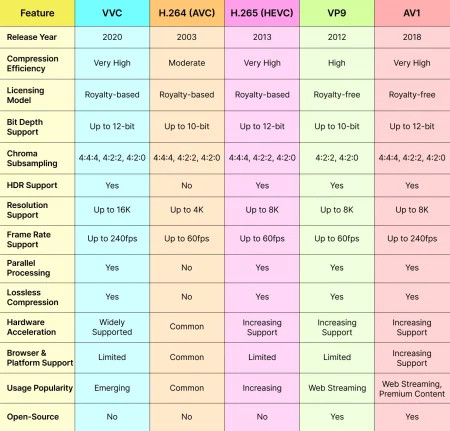
The Best Practices for VVC Streaming
1. Content Preparation for VVC
Before VVC streaming, ensuring that your content is prepared optimally sets the foundation for superior viewer experiences. Start by encoding your source content at the highest quality available. VVC excels at maintaining visual excellence, and providing it with a high-quality source allows the codec to truly shine.
Additionally, consider implementing color correction and enhancement techniques to ensure that your content appears vivid and captivating on various viewing devices.
2. Encoder Settings and Parameters
Adjusting encoder settings and parameters is crucial for achieving the optimal balance between compression efficiency and visual quality. VVC offers a range of encoding presets that cater to different content types, such as film, animation, and live action.
Experiment with these presets to identify the one that best suits your content. Additionally, fine-tune parameters such as bitrate, GOP (Group of Pictures) structure, and quantization settings to achieve the desired trade-off between quality and file size.
3. Adaptive Streaming Implementation
VVC’s support for adaptive streaming enables seamless switching between different quality levels based on available bandwidth. Implement adaptive streaming protocols such as HLS (HTTP Live Streaming) or DASH (Dynamic Adaptive Streaming over HTTP) to ensure that viewers experience consistent playback regardless of network conditions.
By offering multiple quality variants, you cater to diverse audience preferences and varying network capabilities.
4. Resolution Variants
VVC’s capability to deliver content in various resolutions empowers content providers to cater to a wide array of viewer devices. Create multiple resolution variants of your content, including HD, Full HD, and even 4K, to accommodate viewers across smartphones, tablets, laptops, and large-screen smart TVs.
This approach ensures that your content remains accessible and visually appealing on devices of varying sizes and resolutions.
5. Bitrate Allocation
The allocation of bitrate across different resolution variants is a critical decision that impacts both visual quality and compression efficiency. Higher resolutions typically require more bitrate to maintain quality, while lower resolutions can operate with lower bitrates.
Allocate bitrate judiciously based on the importance of each variant and the typical viewing scenarios. This practice ensures that your content delivers a consistent and engaging experience across the board.
6. Testing and Quality Assurance
Thorough testing and quality assurance play a pivotal role in optimizing VVC streaming. Conduct rigorous testing across different devices, screen sizes, and network conditions to identify any potential playback issues or quality discrepancies.
Iterate through encoding presets and parameter adjustments to find the configuration that aligns with your desired outcome. Collaborate with a diverse group of users to gather feedback and refine your encoding strategies.
7. Metadata Enrichment
Metadata enrichment enhances the discoverability of your content across streaming platforms and search engines. Craft compelling titles, descriptions, and relevant tags that accurately represent the content and appeal to your target audience.
Incorporate keywords that resonate with potential viewers, increasing the likelihood of your content being surfaced in search results and recommended playlists.
8. Transcoding and Packaging
Transcoding and packaging are essential steps in preparing your VVC-encoded content for distribution across different streaming platforms. Each platform may have specific requirements and recommendations for encoding profiles, bitrates, and packaging formats.
Adhere to these guidelines to ensure that your content is delivered seamlessly to viewers, maintaining quality and compatibility.
To Conclude
Undoubtedly, VVC emerges as a revolutionary advancement in the realm of video compression, ushering in a new era of enhanced visual quality and efficient data transmission for streaming businesses.
Its ability to balance exceptional compression efficiency with captivating visual experiences makes it a pivotal tool for content providers aiming to captivate audiences across diverse platforms and devices.
As the streaming industry continues to evolve, staying ahead of the curve becomes essential. This is where Muvi One steps in. Muvi One empowers you to launch your own branded OTT platform effortlessly, even without a single line of code.
With features like multi-DRM support to secure your content, in-built SEO tools to boost discoverability, user-generated content integration to foster engagement, and robust metadata management, Muvi One empowers you to unlock the full potential of the streaming industry.
Take a 14-day free trial to get started.

FAQs
VVC streaming, short for Versatile Video Coding streaming, is a technology that delivers high-quality video content over the internet by efficiently compressing and transmitting video data, ensuring a better viewing experience for users.
VVC codec, or Versatile Video Coding codec, is a video compression standard designed to significantly reduce the size of video files while maintaining high quality. It’s used in VVC streaming to encode and decode video content.
- What are the advantages of VVC streaming?
Advantages of VVC streaming include superior video quality at lower bitrates, efficient compression for bandwidth savings, support for high resolutions and dynamic HDR content, and enhanced versatility for various applications, from video conferencing to entertainment.
- Is VVC streaming backward compatible with older codecs?
VVC streaming is not directly backward compatible with older codecs, as it requires specific decoding capabilities. However, some platforms may employ transcoding to deliver VVC-encoded content to devices that support older codecs.
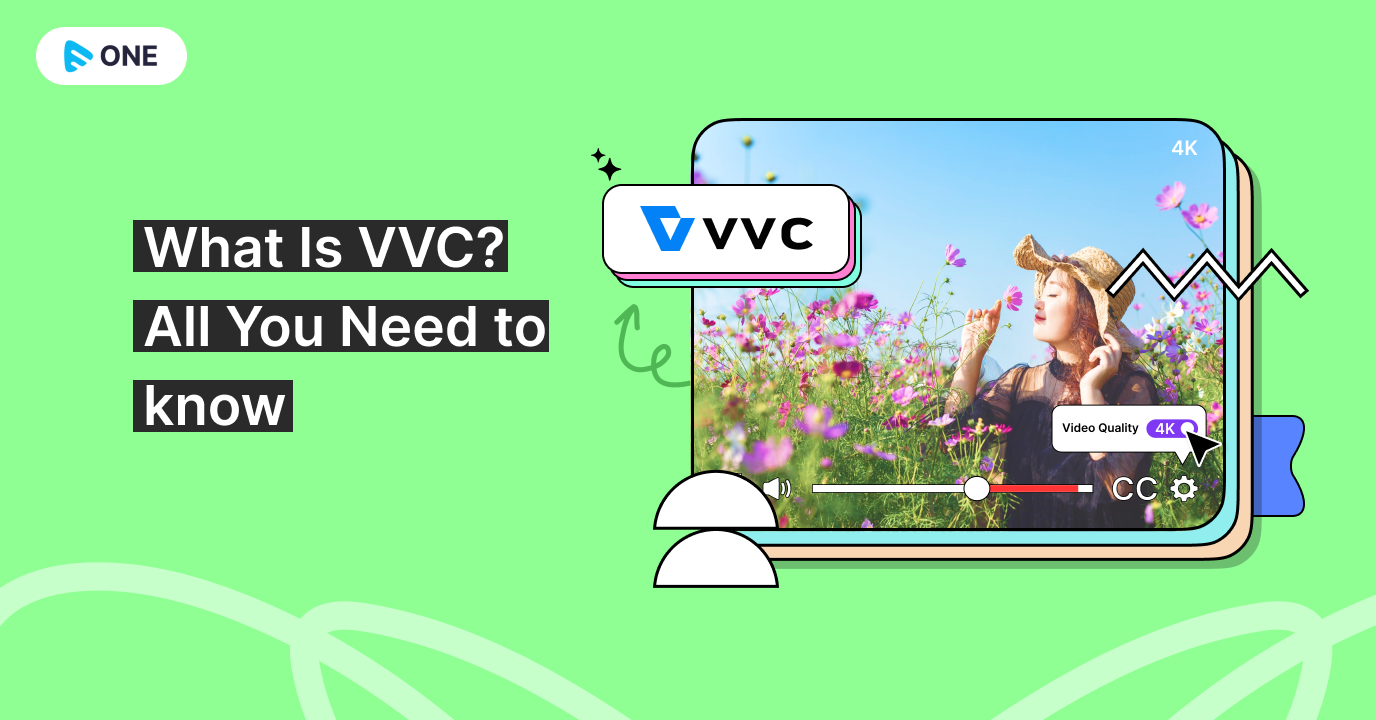














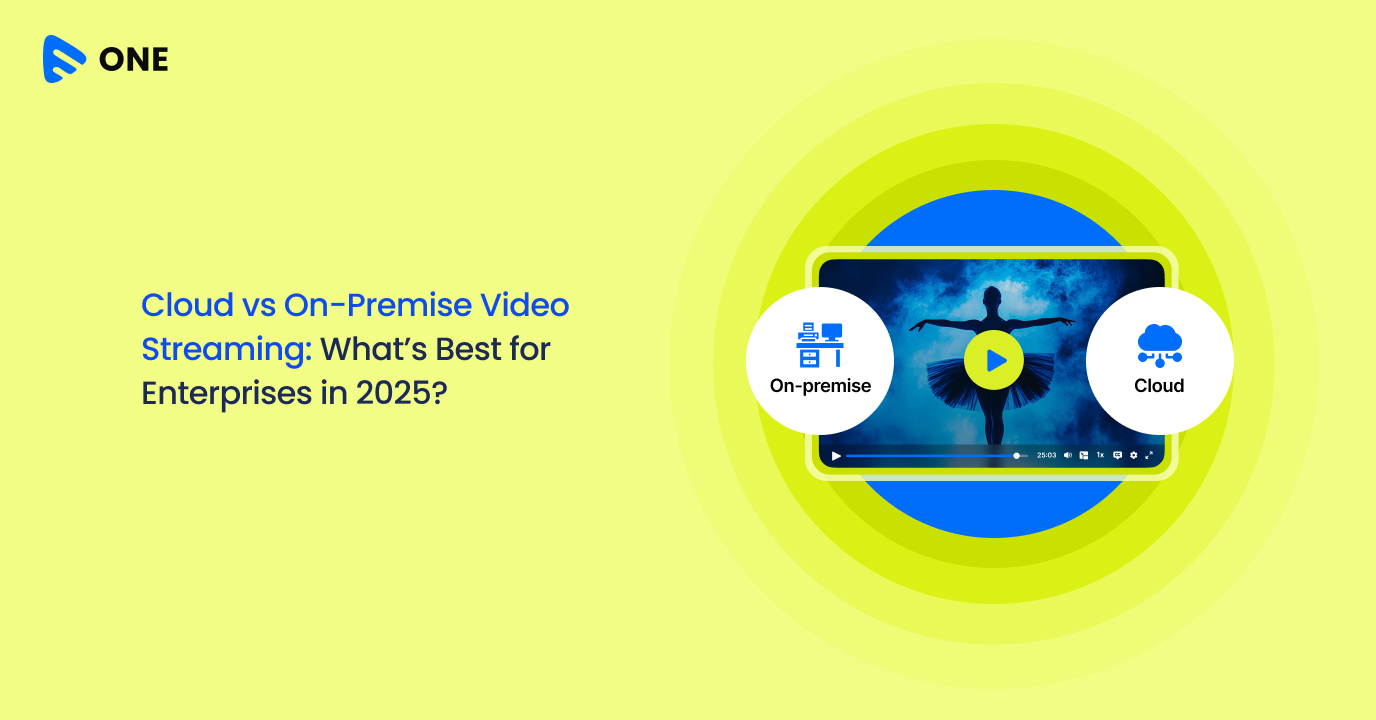
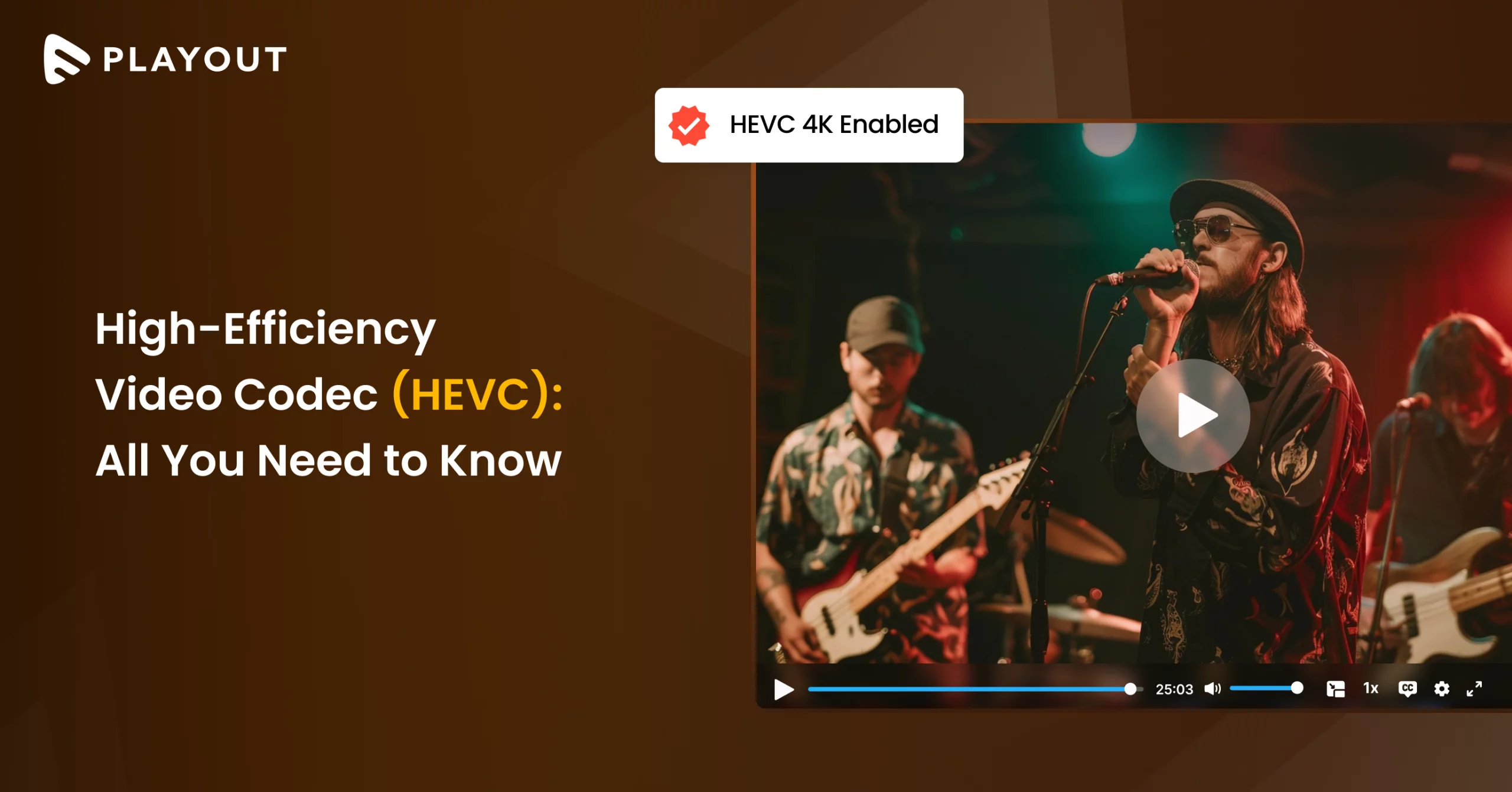




Add your comment